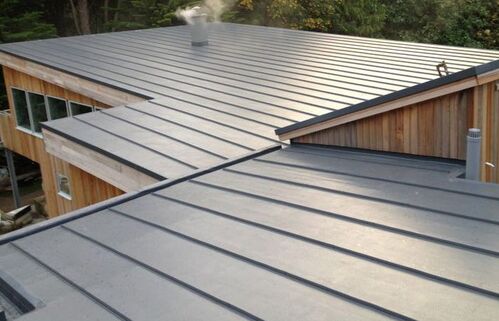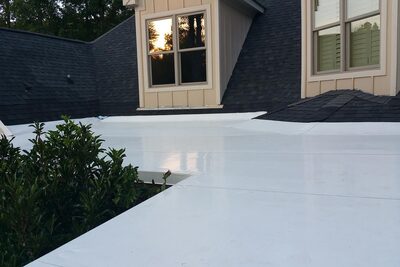
A home cannot be complete without its roof. The roof is an important element of the house not only because of its ability to protect you from falling or pouring substances and light that is coming from the outside, but it also gives the exterior of your home the look we all know and love. Through the years, architects have changed and reinforced the roof's design to fit in with the needs of the people and the era it is trying to project.
Because of the numerous designs that were made, a roof enables a home to have its very own distinct look. From mansard to saltbox, to gabled and pyramid, you may face the difficulty of choosing which one best fits your home’s function and personality. To narrow down your choices, let us begin to first look at flat roofs.
Flat roofing can be easily identified because of its form. Just like what the name suggests, flat roofs are constructed as such to give homeowners an easier time to add a second floor or convert a part of this roof into a space one which one can stand. However, because of its design, flat roofs are a high maintenance choice because all the debris will be collected inside.
If choosing the flat roof is the path you are going with, you must also know that there are installation options for this kind of roofing.
This option is made out of three of more piles of waterproof materials. Because of its design, BURs are excellent fire retardants, attractive around home windows and decks that overlook the roof, and it is the cheapest among the flat roof types. However, BURs are heavy, smelly, and messy to install; approaching the installation in a do-it-yourself manner is not a good idea.
This is a single-ply roof that is fortified with a mineral-based wear surface. They are commonly installed in hot moppings of asphalt or cold adhesives. Unlike the BUR, the modified bitumen is lighter and can be installed through the DIY method. However, it is not fire retardant and is recommended to be used for occupied buildings.

Short for ethylene propylene diene monomer, the materials for this option is made out of rubber. When it is properly applied, it can last up to 25 years. Because of its constitution, it is often installed on roofs that have problems with weathering, inflexibility, and failing joints. However, EPDMs cost more than BURs and it is more vulnerable to being punctured.
It is a blend of propylene polymers and is reinforced with polyester. Among the flat roof options, TPO is a popular choice for those who are into green living; there are no plasticizers added in the material and it does not degrade under UV radiation. TPOs however, are new in the roofing scene. There are still many points for improvement, but if you are interested in its features, there is no harm in trying it out on your home.
The materials in PVCs are reinforced with polyester or glass-fiber mats or scrims. PVC contains plasticizers, stabilizers, and other additives to improve flexibility and other desired properties. PVC also provides energy proficiency because of its inherently light coloring. However, PVCs are not great against cold weather conditions, by virtue of being prone to shattering. It also deteriorates over time and has the tendency to shrink which can potentially cause leaks.
If you are living in the surrounding areas of Newtown, Connecticut and are in need of a professional hand when it comes to roof installations, then contact Superior Remodelers at: 888-330-8148 or through our contact page here! Our services also include:
And many more!